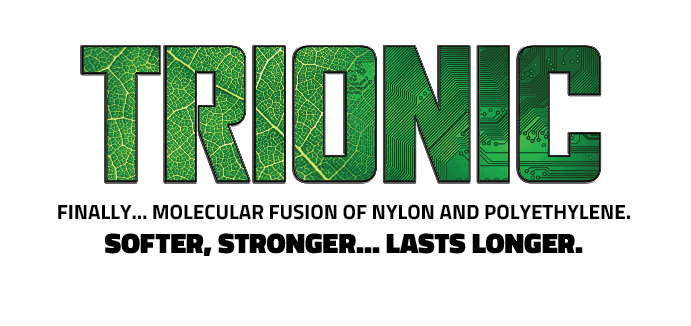For decades, there’s been a single challenge holding back the entire industry: no one could combine nylon with polyethylene to create the ultimate fiber. The reality is that these two polymers, which manufacturers have been using to make synthetic fibers since the dawn of the industry in the 1960s, have serious drawbacks.
Nylon was used first. It is durable, but it’s too abrasive. In the 1990s, manufacturers started using polyethylene because it offers a softer feel that athletes prefer. However, polyethylene alone isn’t hard-wearing enough.
The only solution is to combine them. But, as nylon and polyethylene are like oil and water at the molecular level, no one has been able to accomplish this.
Until now.
After five years of intensive research and development, in late 2017, AstroTurf started installing its patent-pending Trionic fibers. They have since become a game-changer for the industry, and AstroTurf has installed over 5,000,000 square feet of Trionic across North America.
Let’s take a look at what Trionic fibers are and why they are superior to even the most advanced polyethylene fibers on the market today.
What Are Trionic Fibers?
Trionic fibers are molecularly fused nylon and polyethylene fibers. They combine the benefits of both materials while eliminating the shortcomings, resulting in synthetic turf that is stronger, longer-lasting, and more player-friendly.
Proven in accelerated wear tests to last 50% longer than even AstroTurf’s own top-of-the-line high micron monofilament fibers, as well as competitors’ turf, Trionic has become known as the industry’s wonderfiber.
The Technology Behind Trionic
The fusion of nylon and polyethylene (PE) was a feat of chemical engineering. This new technology has raised the standard for high-quality synthetic turf, helping to advance the industry as it moves into its seventh decade.
It also garnered major recognition. In 2019, the Synthetic Turf Council selected AstroTurf’s Trionic fibers as the Innovation of the Year.
Here’s how the technology works.
To fuse nylon and PE, AstroTurf encases the nylon polymers with special compatibilizers. At the molecular level, these unique coupling agents have an affinity for both nylon and polyethylene.
Nylon and PE naturally repel one another. But the right compatibilizers can bridge the gap. AstroTurf engineers spent years testing different coupling agents and refining the binding process to develop the best possible compatibilizers for the job. The end result is incredible long-term fiber integrity and durability.
Why Trionic Fibers Are the Most Advanced Option on the Market
Pioneering fusion at the molecular level is only part of the Trionic innovation story. AstroTurf perfected two other synthetic turf technical advancements to achieve an even better system: entanglement and sharkskin technology.
- Entanglement reinforces the main molecular chains of polyethylene polymers, which makes the fibers less vulnerable to splitting from UV exposure and usage. AstroTurf uses this technique for all of our PE fibers, not just Tronic.
- Sharkskin technology involves reducing the amorphous sections of the fiber, which are random and unstructured, and increasing the crystalline sections, which are structured. At the microscopic level, the fiber looks rough, like sharkskin. However, because of the increase in crystalline portions, which are more ordered, the fibers actually feel smoother.
Softer, Stronger, and the Preferred Choice of Athletes Across North America
From Fresno State to the University of North Carolina, colleges, high schools, and athletic facilities from coast to coast are opting for Tronic fibers.
The bottom line is, they are a cut above the best that the industry has been able to produce for over 60 years. Longer lasting, more durable, and softer than anything made before, Trionic is the future of synthetic turf.
